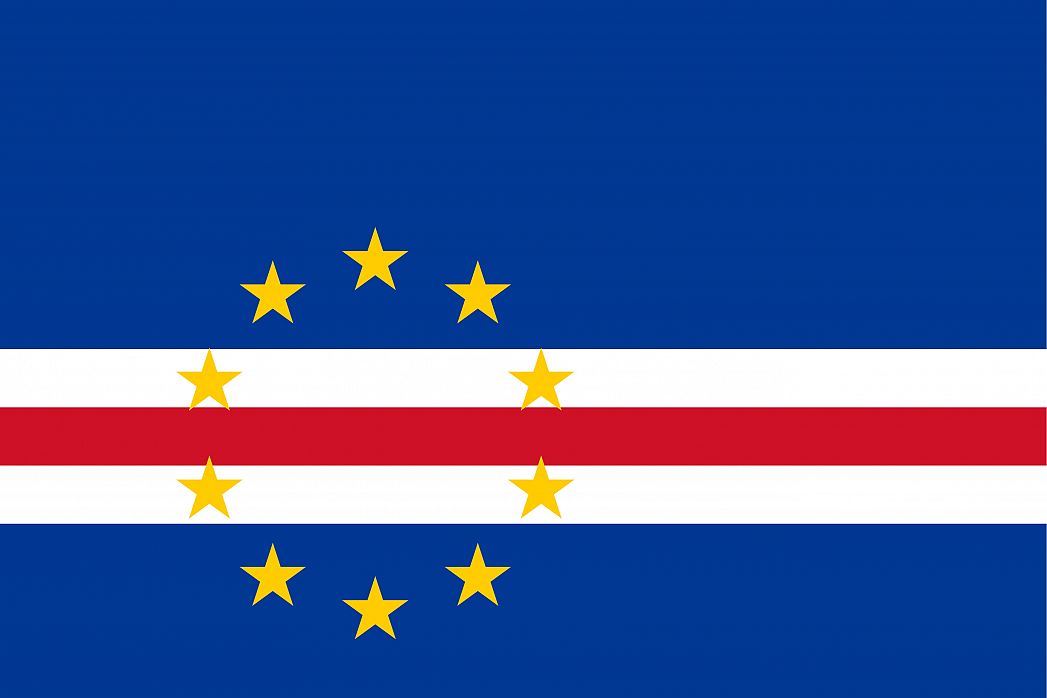The current flag of Cape Verde was made official in September of 1992. This version of the flag is made up of 5 horizontal stripes. The top half of the flag is covered by one blue stripe, which is followed by white, red, white, and blue stripes. The white, red, and white stripes take up 25% of the flag space and the bottom quarter is covered by the other blue stripe. Additionally, this flag has a circle of 10, yellow 5-pointed stars. These stars are situated to the left of the center and immediately over the white, red, and white stripes.
Each of the colors and images on the flag of Cape Verde has a specific meaning. The 10 yellow stars, for example, stand for the largest islands that make up the country. Additionally, the red and white stripes are often related to a road, which is said to be the road toward development. The blue color is said to represent the ocean surrounding the country and the sky above. The white color on this flag stands for peace and the red color represents the effort the country took to achieve independence.
The current flag design was developed by the Movement for Democracy in 1991, when Cape Verde became independent of Guinea-Bissau. At this time, the political party drastically changed the flag to indicate its intent of separating from the pan-African movement. The chosen design was influenced by the flag of Europe.
When Cape Verde first achieved independence from Portugal, the country was allied with Guinea-Bissau. The design of the first flag of this newly independent country was, therefore, based on the flag design of the African Party for the Independence of Guinea-Bissau and Cape Verde. This original flag, used between 1975 and 1992, was a tricolor of red, yellow, and green. The red stripe ran vertically down the left side and the yellow and green stripes ran horizontally. Additionally, a corn wreath with a black star in the middle was situated in the center of the red stripe.
This page was last modified on May 1st, 2018
More on Graphicmaps

Published on 2019-11-06
What is a Trade Embargo?

Published on 2019-11-04
Which Two Countries Used to Have the Same Flag?

Published on 2019-09-16
What Is the Only Two-Sided State Flag?

Published on 2019-09-16
Which Country Flag Looks Like the Texas Flag?

Published on 2019-08-29
Flags That Resemble the US Flag

Published on 2019-08-20
